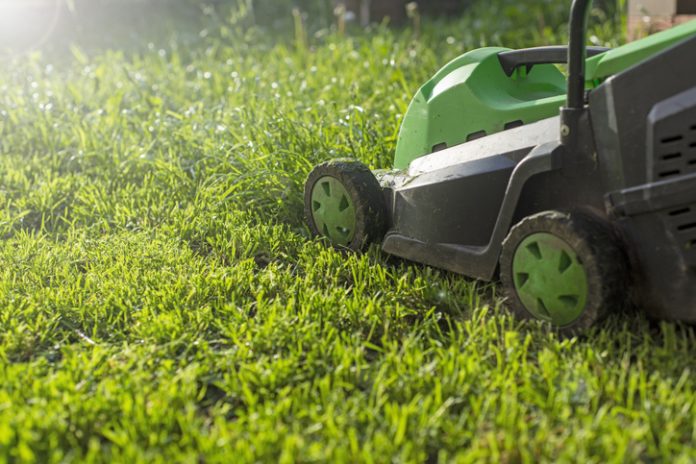Maintaining a beautiful lawn and landscaping takes work year-round. While we often think of seasonal lawn care tasks like mowing, watering, and weeding as things we only need to focus on during certain months, the truth is that establishing a routine of both preventative and project-based yard work helps your grass, plants, and flowers stay healthy and lush regardless of the weather or time of year.
In this guide, we will break down a suggested monthly calendar of lawn care tasks to help you improve and care for your yard across the different seasons. From spring cleanups to fall fertilizing, we’ll cover the steps home improvement and landscaping professionals recommend to keep your outdoor space looking its best throughout the year.
Spring Lawn Care: Tips & Tricks
In the spring, it’s all about preparing your lawn for the upcoming growing season. As temperatures rise and the ground thaws, it’s time to focus on cleaning up any debris and damage from winter weather and prepping your soil for new growth.
- Begin by raking away any dead leaves or debris that have accumulated on your lawn over the winter months. This will allow your grass to breathe and absorb sunlight.
- Check for any areas of compacted soil which can lead to poor drainage and inhibit root growth. If you find any, use an aerator or manually poke holes in the ground to loosen the soil.
- Next, assess your lawn for bare spots or thinning patches. Overseeding these areas with new grass seed will help fill them in and create a lush, even lawn.
- As temperatures start to warm up, it’s also an excellent time to apply pre-emergent herbicides to prevent weeds from sprouting.
- Finally, give your lawn its first mow of the season. Set your mower blades at their highest setting for the first cut of the year, gradually lowering them as the season progresses. This will prevent shock to the grass and help it grow thicker and healthier.
Summer Lawn Care: Tips & Tricks
Summer is often the most labor-intensive time for lawn care, as warm temperatures and frequent rain create ideal growing conditions for both your turfgrass and any weeds or pests.
- Keep up with regular mowing, making sure not to cut your grass too short. Taller grass shades the soil, which helps prevent weeds from sprouting and keeps moisture in the ground.
- Water your lawn deeply but infrequently to encourage deep root growth and drought resistance. A general rule of thumb is to aim for about 1 inch of water per week.
- Keep an eye out for pests like grubs or chinch bugs, which can damage your lawn if left unchecked. Applying insecticides as needed can help keep these pests in check.
- If you notice any bare spots or thinning areas in your lawn, consider overseeding again to keep it looking full and healthy.
Fall Lawn Care: Tips & Tricks
In the fall, cooler temperatures signal a slowdown in growth for many types of grass. This is a great time to focus on preparing your lawn for the following spring and ensuring it stays healthy through the winter.
- Remove any fallen leaves or debris from your lawn, as they can smother grass and contribute to disease in wet conditions.
- Aerate your lawn again if needed, as fall is a good time to tackle soil compaction before the ground freezes.
You can also apply a top dressing of compost or other organic material to help improve soil structure.
- Fertilize your lawn with a slow-release fertilizer to promote root growth and overall health. This will provide nutrients for your grass throughout the winter and into the next growing season.
- Keep mowing as needed, gradually lowering the blades until the last mow of the year when the grass stops growing.
Winter Lawn Care: Tips & Tricks
While most lawn care tasks take a backseat in the winter, there are still a few things you can do to keep your lawn healthy and prepare for the upcoming spring.
- Avoid walking on or driving over your lawn when it is covered in snow or frozen, as this can cause damage to the grass blades. If you need to access an area, use designated paths or lay down a temporary walkway.
- Keep watering your lawn during dry spells, as even in winter, grass still needs some moisture to stay healthy.
- Consider overseeding with cool-season grasses if your lawn has thin or bare spots. These types of grasses are better equipped to handle the cold temperatures and can help your lawn stay green throughout the winter.
- Lastly, take this time to plan for any landscaping projects you may want to tackle in the spring. This can include building a new flower bed, installing a water feature, or adding outdoor lighting. Planning ahead will ensure you have everything you need and can hit the ground running when the warmer weather returns.
FAQ
- Q: How often should I mow my lawn in the summer?
A: It is recommended to mow once a wee, but adjust the frequency depending on how quickly your grass is growing.
- Q: Can I overwater my lawn?
A: Yes, overwatering can lead to shallow root growth and make your lawn more susceptible to disease and pests. Aim for deep, infrequent waterings instead.
- Q: When should I apply pre-emergent herbicides?
A: Pre-emergent herbicides should be applied in the spring before weeds sprout. Consult with a professional or follow product instructions for specific timing recommendations. Overall, lawn care is an ongoing process that requires attention and care throughout the year. By following these suggested tasks and tips, you can maintain a healthy and beautiful lawn that will be the envy of your neighborhood.
Final Thoughts
Remember to adjust your lawn care routine based on your specific climate and grass type. Regular maintenance, timely treatments, and proper watering are key to keeping your lawn in top shape year-round. And don’t forget to enjoy the fruits of your labor by spending time outdoors, relaxing, and playing on your lush green lawn. Contact a lawn expert for more info and personalized tips on how to care for your lawn.





















